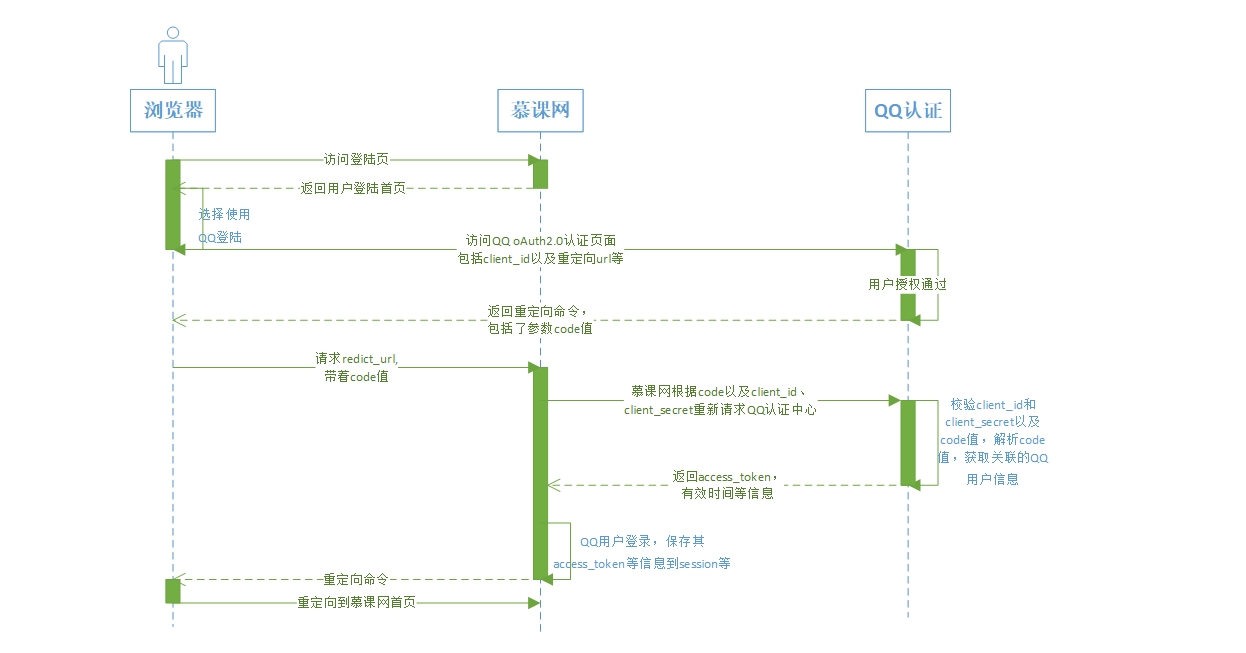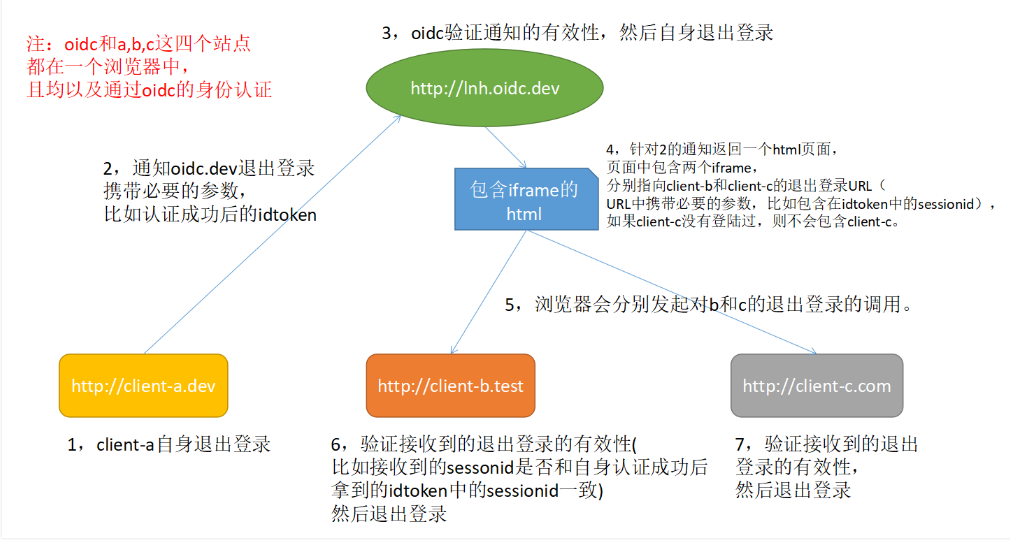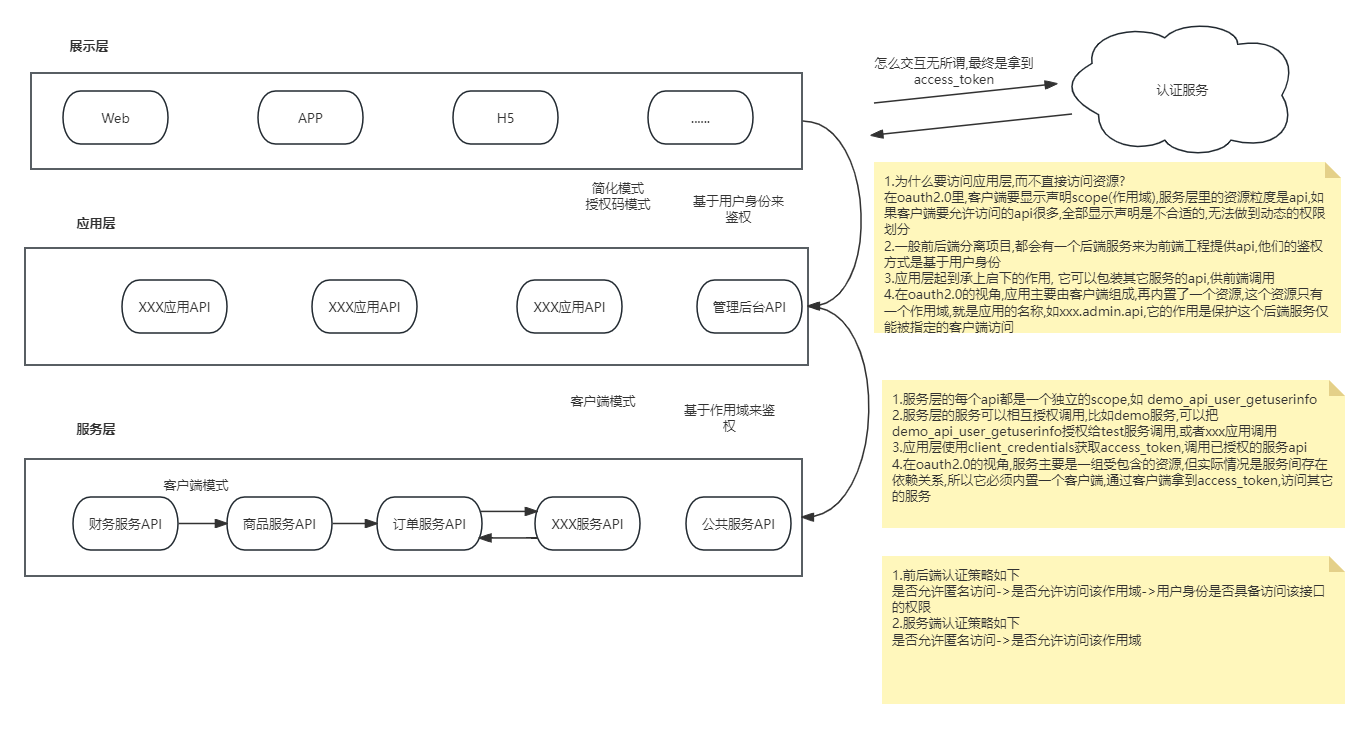
我们提供安全,免费的手游软件下载!
市面上关于认证授权的框架已经比较丰富了,大都是关于单体应用的认证授权,在分布式架构下,使用比较多的方案是--<
应用网关
>,网关里集中认证,将认证通过的请求再转发给代理的服务,这种中心化的方式并不适用于微服务,这里讨论另一种方案--<
认证中心
>,利用jwt去中心化的特性,减轻认证中心的压力,有理解错误的地方,欢迎拍砖,以免误人子弟,有点干货,但是不多

一个项目拆分为若干个微服务,根据业务形态,大致分为以下几种工程
1.纯前端应用
示例,一个简单的H5活动页面,商户仅仅需要登录,就可以参与活动
2.前后端分离应用
示例,如xxx后台,xxxApi,由一个前端项目+一个后端项目组成
3.客户端应用
示例,控制台项目,如任务调度,挂机服务
现在有N个项目,每个项目又由N个微服务组成,微服务之间需要一套统一的权限管理,它需要同时满足商户(客户)在多个项目间无感切换,也需要满足开发者应用之间调用的认证授权
示例,xxx开放平台,一般有两个角色,商家和开发者, 开发者创建应用,研发,上线应用, 商家申请应用,使用应用
开发者A,注册成为xxx开放平台的开发者,创建了一个测试应用,测试应用依赖其它应用的某些能力(如,短信,短链....),申请获得这些能力后,开发完成,将测试应用发布到应用市场,
商家B,申请开通了测试应用和XXX应用,它可以无感的在两个应用间切换(单点登录)
OAuth 引入了一个授权层,用来分离两种不同的角色:客户端和资源所有者。......资源所有者同意以后,资源服务器可以向客户端颁发令牌。客户端通过令牌,去请求数据。
OAuth 2.0 规定了四种获得令牌的流程。你可以选择最适合自己的那一种,向第三方应用颁发令牌。下面就是这四种授权方式。


在.net里,比较靠前的两个框架(IdentityServer4,OpenIddict),这两个都实现了OAuth2.0,相较而言对IdentityServer4更加熟悉点,就基于这个开始了,顺便扫盲,听说后面不开源了,不过对于我来说并没有影响,现有的功能已经完全够用了
IdentityServer4 网上的资料非常多,稍微爬点坑就能搭建起来,并将OAuth2.0的4种认证模式都体验一遍,这里就不多介绍了,这里强烈推荐Skoruba.IdentityServer4.Admin 这个开源项目,方便熟悉ids4里的各种配置,有助于理解
把数据持久化到数据库,登录用的是Identity,这个可以根据自己的需求自行拓展,不用也行,我这里还是用的原来的表,只是重写了登录逻辑,方便后面拓展更多的登录方式,看着挺简单,其实一点也不复杂
///
/// 登录
///
///
/// Login(LoginRequest model)
{
model.ReturnUrl = model.ReturnUrl ?? "/";
var user = await _context.Users.FirstOrDefaultAsync(m => m.UserName == model.UserName && m.PasswordHash == model.Password.Sha256());
if (user != null)
{
AuthenticationProperties props = new AuthenticationProperties
{
IsPersistent = true,
ExpiresUtc = DateTimeOffset.UtcNow.Add(TimeSpan.FromDays(1))
};
Claim[] claim = new Claim[] {
new Claim(ClaimTypes.Role, "admin"),
new Claim(ClaimTypes.Name, user.UserName),
new Claim(ClaimTypes.MobilePhone, user.PhoneNumber ?? "-"),
new Claim("userId", user.Id),
new Claim("phone",user.PhoneNumber ?? "-")
};
await HttpContext.SignInAsync(new IdentityServer4.IdentityServerUser(user.Id) { AdditionalClaims = claim }, props);
return Ok(Model.Response.JsonResult.Success(message:"登录成功",returnUrl: model.ReturnUrl));
}
return Ok(Model.Response.JsonResult.Error(message: "登录失败", returnUrl: model.ReturnUrl));
}
@{
Layout = null;
}
登录
implicit
这个网上有示例,照着抄就可以了,基本没有坑
var config = {
authority: "https://localhost:6201",
client_id: "3",
redirect_uri: "https://localhost:9001/callback.html",
//这里别写错
response_type: "id_token token",
post_logout_redirect_uri: "https://localhost:9001/logout.html",
scope: "openid profile api" //范围一定要写,不然access_token访问资源会401
};
client_credentials
这个有大坑,网上90%的文档都是错的,然后抄来抄去,或者说我的oidc-client.js 版本不对,这里要加入点自己的理解
var config = {
authority: "https://localhost:6201",
client_id: "20231020001",
redirect_uri: "https://localhost:9003/signin-oidc.html",
//这里别写错,
response_type: "code",
post_logout_redirect_uri: "https://localhost:9003/logout.html",
scope: "openid offline_access api testScope" //范围一定要写,不然access_token访问资源会401
};
对比这两个模式,验证码模式返回的是code,并不是access_token,所以还用上面的回调页面,肯定报错,熟悉OAuth2.0的同学,都知道缺少一个通过code换取access_token步骤,这里我们从新写回调页面,核心代码就是获取url上的code,然后换取access_token,再将凭证信息写入到缓存
var urlParams = getURLParams();
let url = "https://localhost:5002/api/authorization_code";
var param = {...urlParams,"redirect_uri":config.redirect_uri}
console.log(url)
$.post(url,param,function(data){
console.log(data)
if(data.code != "0"){
alert(data.message)
}else{
let user = new User(data.data);
console.log(user)
mgr.storeUser(user).then(function(e){
window.location.href="https://localhost:9003"
})
}
})
function getURLParams() {
const searchURL = location.search; // 获取到URL中的参数串
const params = new URLSearchParams(searchURL);
const valueObj = Object.fromEntries(params); // fromEntries是es10提出来的方法polyfill和babel都不转换这个方法
return valueObj;
}
真正的坑点在oidc-client.js写入凭证,各种GPT提问,最终弄出来,再弄不出来,我就要考虑手动写入缓存了,但是为了单点登录里统一管理凭证,还是选择用oidc-client.js内置的方法
//重新定义用户对象
var User = function () {
function User(_ref) {
var id_token = _ref.id_token,
session_state = _ref.session_state,
access_token = _ref.access_token,
token_type = _ref.token_type,
scope = _ref.scope,
profile = _ref.profile,
expires_at = _ref.expires_in,
state = _ref.state;
this.id_token = id_token;
this.session_state = session_state;
this.access_token = access_token;
this.token_type = token_type;
this.scope = scope;
this.profile = profile;
this.expires_at = expires_at;
this.state = state;
}
User.prototype.toStorageString = function toStorageString() {
return JSON.stringify({
id_token: this.id_token,
session_state: this.session_state,
access_token: this.access_token,
token_type: this.token_type,
scope: this.scope,
profile: this.profile,
expires_at: this.expires_at
});
};
User.fromStorageString = function fromStorageString(storageString) {
return new User(JSON.parse(storageString));
};
return User;
}();
不出意外,肯定是有坑的,细心的同学已经发现应用C,单点退出失败了,我们来盘一下这里的逻辑
在ids4里面,客户端会配置两个退出通道,
FrontChannelLogoutUri
(前端退出通道),
BackChannelLogoutUri
(后端退出通道),怎么调用这个取决于项目,我们这里主要是web项目,所以配置前端退出通道就可以了,实现也很简单,应用退出的时候,重定向到认证中心的统一退出页面,认证中心退出成功后,再使用iframe调用其它应用配置的前端退出通道

public async Task Logout(string logoutId)
{
await _signInManager.SignOutAsync();
var refererUrl = Request.Headers["Referer"].ToString();
if (string.IsNullOrEmpty(refererUrl))
{
refererUrl = "/account/login";
}
var frontChannelLogoutUri = await _configDbContext.Clients.AsNoTracking().Where(m => m.Enabled).Where(m=>!string.IsNullOrEmpty(m.FrontChannelLogoutUri)).Select(m=>m.FrontChannelLogoutUri).ToListAsync();
ViewBag.FrontChannelLogoutUri = frontChannelLogoutUri;
ViewBag.RefererUrl = refererUrl;
return View();
}
回到前面应用C没有正常退出的原因,仔细观察,原来oidc-client.js默认的存储策略是将凭证存储在 SessionStorage ,在浏览器里每个页签的SessionStorage都是独立的,所以iframe里调用退出页面,是无法清除当前页面的凭证的,解决方案就是修改oidc-client.js默认的存储策略,改为 LocalStorage ,问题解决
class LocalStorageStateStore extends Oidc.WebStorageStateStore {
constructor() {
super(window.localStorage);
}
}
//配置信息
var config = {
...
userStore: new LocalStorageStateStore({ store: localStorage })
...
};
客户端拿到了access_token,只要客户端包含对应的作用域,就能访问对应的api,不出意外,这里肯定要出点幺蛾子,前面都是铺垫,好戏才刚刚开始
问题出在作用域上,同一个客户端,配置了client credentials 与 authorization-code,它们获取的作用域是不一样的,这里对应不同的场景
authorization-code 这里涉及到登录,那么作用域一般包含openId,phone.... 用户身份相关的信息,属于前端调用,access_token对用户可见,这里我用前端作用域代替,且作用域必须显示声明(也就是在前端配置文件里写死,可以翻翻上面的config里scope属性)
client credentials 不涉及登录,可以理解成后端调用,access_token对用户不可见,这里我用后端作用域代替
那它们的意义(粒度)也是完全不同的,作用域可以有多种用途,所以通过authorization-code获取的access_token,不能直接访问受保护的资源,而是应该调用它的后端服务,这里作用域的意义是指服务本身,config.scope = 'openId a.api b.api',然后再通过凭证里携带的用户身份标识,做具体接口的鉴权
通过client credentials获取的access_token,它的作用域意义是指资源服务的具体api,这里我画了个图,便于理解

热门资讯